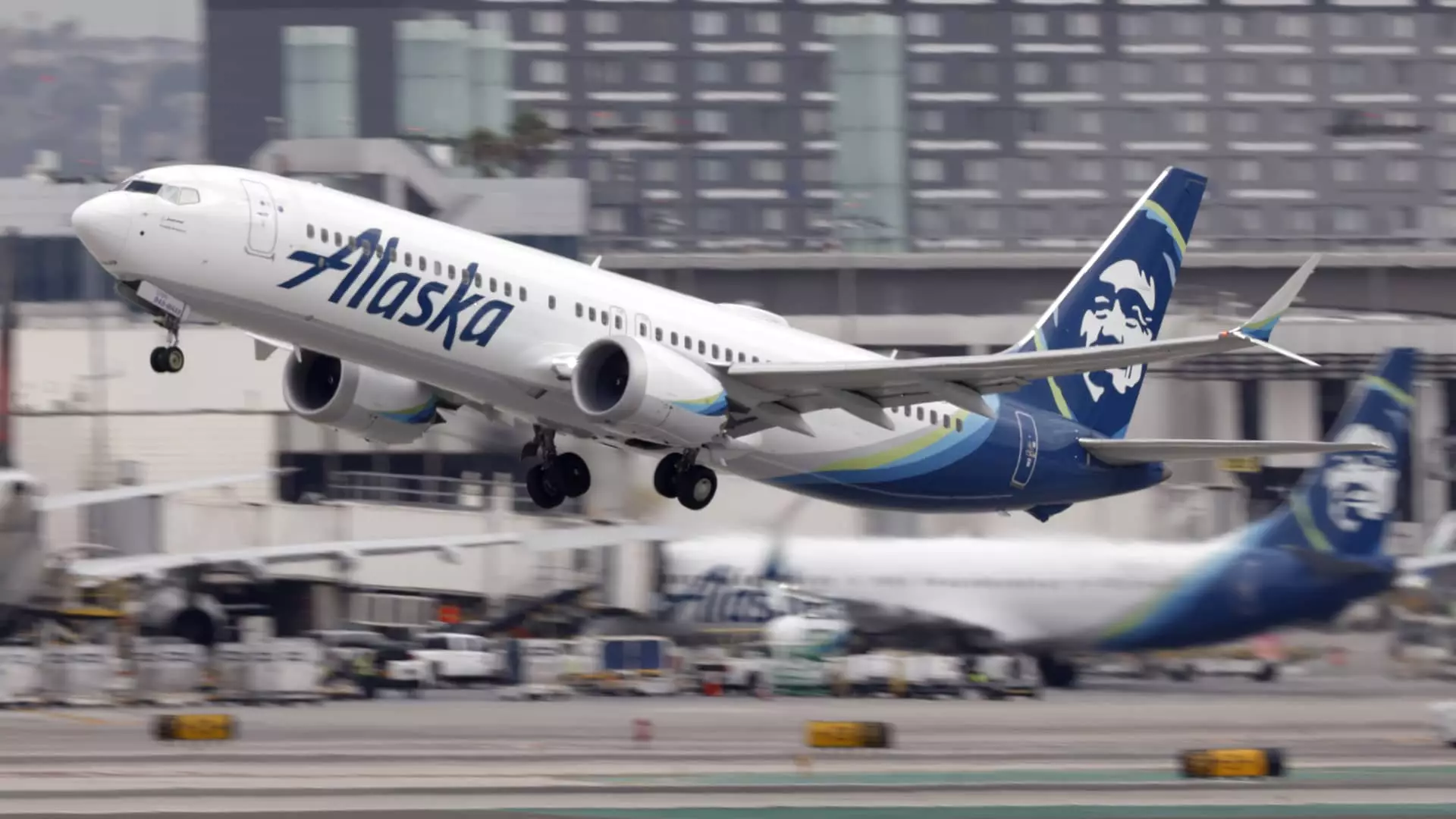In recent years, airlines have increasingly shifted their focus toward cultivating high-end loyalty programs to attract the wealthier, more premium-spending passenger—the “luxury niche” that signals both profitability and brand prestige. Alaska Airlines’ bold move to introduce the Atmos Rewards Summit Visa Infinite card, priced at $395 annually, exemplifies this strategy. Unlike traditional airline credit cards that offered modest perks, Alaska seeks to position itself as a serious contender among the elite with benefits like lounge passes, delayed flight vouchers, and discounted international fares. While this strategy looks promising from a revenue perspective, it surfaces a fundamental tension: does prioritizing high-spenders marginalize the average traveler, potentially eroding the broader customer base?
This move underscores the airline’s recognition that profitability increasingly hinges on capturing the loyalty of high-value customers. Yet, the risk is palpable—premium programs can alienate lower-tier flyers, reducing inclusivity and perhaps fostering resentment among the broader customer pool. Alaska’s decision to keep its branding distinct from Hawaiian Airlines following the merger indicates a conscious effort to position itself as a premium entity without diluting its core identity, emphasizing that capturing the luxury market can coexist with a broader brand ecosystem.
Innovative Earning Structures: Complexity versus Customization
The newly introduced flexible points-earning system reveals Alaska’s nuanced approach to catering to diverse travel behaviors. Offering three distinct ways to accumulate points—by miles traveled, dollar expenditure, and flight segments—reflects an understanding of the varying needs of travelers. International and cross-country flyers are incentivized by miles, high-end travelers focusing on premium cabins are targeted through dollar-based earnings, while frequent short-haul flyers are rewarded through segment-based points.
However, the challenge lies in balancing such complexity. While personalization is beneficial, too many options can create confusion, discouraging less engaged customers from fully understanding or valuing their programs. Moreover, this multilayered model demands sophisticated tracking and management, potentially increasing operational costs and customer service complexities. In a time when simplicity can be a competitive advantage—especially for infrequent travelers—airlines must weigh the benefits of tailored programs against the risk of alienating less savvy users.
The upward revision of elite tiers, requiring more points for the top statuses, suggests Alaska is committed to increasing the exclusivity barrier, echoing rival strategies. While exclusivity generally enhances desirability, it also risks restricting access to truly loyal flyers, thereby limiting the breadth of their loyalty base.
The Industry’s Race to the Top: Is It Sustainable?
Alaska’s investment in premium lounges and international routes, along with plans to launch wide-body flights from Seattle, indicates an industry-wide emphasis on capturing high-margin customers. The competition to offer luxury experiences—think upscale lounges with minimal lines and top-tier seats—reflects a broader industry knowledge that the premium travel segment is resilient even amid economic downturns.
However, this raises concerns about overextension. The airline industry, historically volatile, faces increasing pressure to justify these costly efforts through ever-higher loyalty thresholds and expansive amenities. The risk is that such investments might benefit only a small, elite subset of travelers, leaving the mass market feeling neglected or priced out. Meanwhile, budget airlines like Spirit and Frontier are attempting to mimic these strategies by adopting more upscale offerings—highlighting a possible shift in the market dynamic, where the lines between budget and premium are blurring.
Alaska’s pledge to provide free Starlink Wi-Fi to loyalty members exemplifies this tendency to bundle services that once seemed reserved for first-class cabins, subtly shifting expectations for all travelers. Yet, whether this approach can be sustained in an environment of economic uncertainty remains questionable, especially when fares and fees continue to climb.
The Power Dynamics of Loyalty and Brand Loyalty
In a landscape where loyalty programs serve as a primary revenue and retention tool, Alaska’s strategy suggests a deliberate attempt to lock in high-value customers through sophisticated perks and tiered benefits. The idea is to create “sticky” loyalty—compelling enough to keep travelers coming back and spending more. Nonetheless, this approach risks creating a segregated experience where loyalty benefits are only accessible to the most dedicated, fostering a form of elite exclusivity that might alienate the less loyal or occasional flyers.
From a long-term perspective, this model raises questions about the social implications of such stratification. While businesses naturally prioritize high-margin customers, airlines must remain conscious of the potential reputation hit when the loyalty system feels inaccessible or unfair to everyday travelers. Striking a balance between the allure of exclusivity and genuine inclusiveness will determine whether these policies fortify or fracture brand loyalty in a competitive landscape.
In essence, Alaska Airlines’ new loyalty initiative signals a strategic pivot—one that seeks to carve out a lucrative niche within a crowded market. Whether this focus on high-end perks and complex earning structures will pay off in sustained profitability or lead to unsustainable bubbles remains to be seen. What is clear, however, is that the airline industry’s future is increasingly intertwined with a delicate balancing act: cultivating high-spending aristocrats without alienating the broader, essential customer base.

